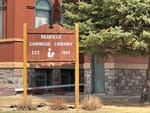The COVID-19 pandemic has already changed the way colleges and universities are teaching students, forcing a move this spring and summer away from in-person classroom learning to remote education.
Moving forward, the virus and the unknowns surrounding it have the potential to fundamentally alter the short-term and long-range future of higher education in South Dakota and across the country.
The pandemic is affecting higher education and causing concern at both public universities and private colleges, at schools large and small, and at research institutions with doctoral capabilities, and at liberal arts colleges that focus mostly on undergraduate degrees.
The virus has caused great uncertainty for higher education, with administrators, faculty, staff and students all waiting to see what a new normal may look like in the fall and beyond.
One thing seems certain: The pandemic will change who goes to college, how they are taught, what campuses look like, how they operate, and how higher education is funded and at what level.
“I do think the landscape in higher education for South Dakota has the potential to look very different, depending on how we all get through this pandemic,” said Sheila Gestring, president of the University of South Dakota.
The challenges and changes will likely fall into two major categories: the logistics of living, learning and teaching on and off campus; and the broad financial implications of the potential for significantly reduced enrollment.
On a logistical level, in-class learning could decrease and more teaching may shift online, reducing the future need for new classroom buildings, labs and other brick-and-mortar structures. The Board of Regents announced in early May that state universities would hold in-person classes on campuses in the fall, and most private colleges have followed suit, though that could change depending on the state of the pandemic. Whether to hold in-person classes is a hot topic in higher education with the University of California system, the nation’s largest public university system, announcing on May 12 that it would not bring students back in the fall.
The virus may force colleges to enact strict safety measures. Gestring suggested during a recent Board of Regents meeting that masks may be required for everyone on the USD campus this fall, that hand sanitizer will be omnipresent and that plexiglass barriers might separate teachers from students.
But the biggest and most long-term impact of the pandemic is likely to be financial for the institutions and those who attend, teach or work on campuses.
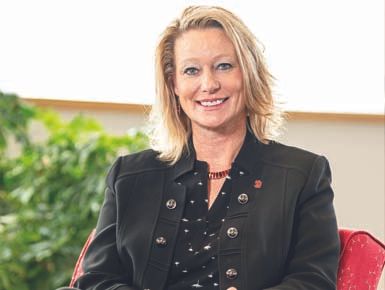
“If some of those experts are right, and enrollments decline the way they’re talking, it is not an overstatement to say this will challenge higher education like it hasn’t been challenged in decades." -- Sheila Gestring, president of the University of South Dakota
The COVID-19 pandemic has put unprecedented financial challenges on the American higher-education system, according to David Tandberg, a vice president for policy research at the State Higher Education Executive Officers Association, a Colorado trade group representing college administrators.
The pandemic is likely to result in reduced student enrollment, reducing the main revenue driver for most colleges across the country. But the pandemic has simultaneously required colleges to increase spending to create and implement remote learning opportunities and make campuses safe for students, faculty and staff.
“This is like the perfect storm when it comes to a negative financial hit on our institutions of higher education,” Tandberg said. “They’re getting hit on all ends.”
South Dakota public universities have already taken a big fiscal hit: Regents officials told News Watch that the six schools in the state system reimbursed $16 million to students for tuition, fees, housing, meals and parking after shifting to remote learning in the spring semester.
Some national experts have predicted enrollment in the fall 2020 semester could fall by 15% to 20% at colleges across the country. A recent survey of more than 400 parents of college-bound students by a Philadelphia public relations firm found that 40% of parents may delay sending their children to college amid the pandemic. Most South Dakota colleges are seeing signs that fewer students than normal are enrolling for the fall or signing up for financial aid or to live in student housing.
The impacts of reduced enrollment will be felt far beyond reductions in tuition and fees, which alone would be significant.
Fewer students may choose to live in on-campus housing, dine at university food-service outlets and spend money in the cities where universities are located. Some students — many whose families are facing financial challenges created by high unemployment and income declines —may decide to skip a year of college or forgo attending a university altogether.
College sports may be put on hold or held without fans in the stands, reducing the opportunity for athletes to attend college, dampening school spirit and cutting off a significant revenue source for schools and the communities in which they reside.
As a result, a host of cuts or cost-saving measures are possible at schools in South Dakota and across the country. Holding positions open, delaying construction projects, laying employees off or mandating unpaid furloughs, and possibly raising tuition and fees, are all on the table.
“If some of those experts are right, and enrollments decline the way they’re talking, it is not an overstatement to say this will challenge higher education like it hasn’t been challenged in decades,” Gestring said in an interview with News Watch.
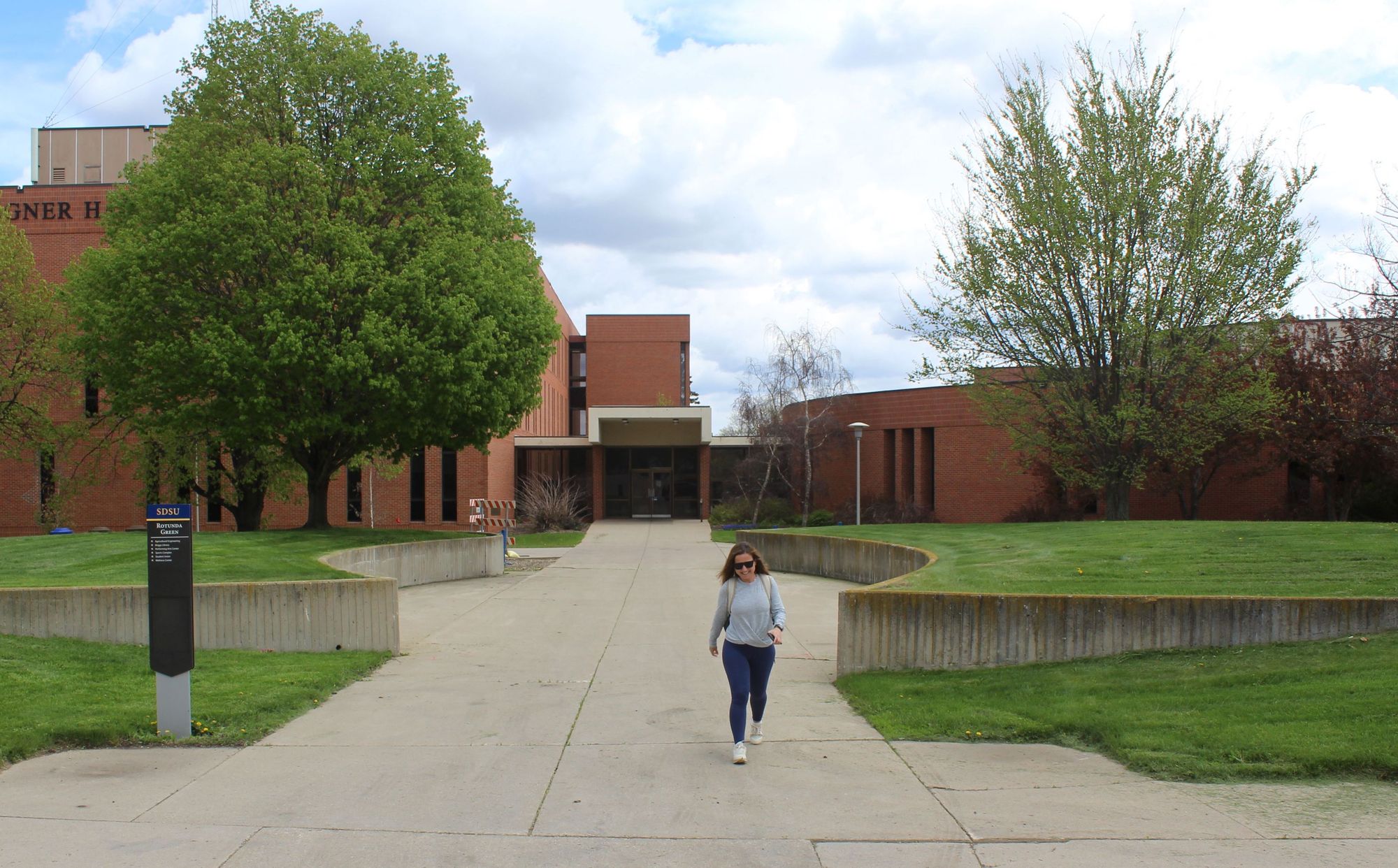
Colleges face big-picture challenges
The fiscal headwinds faced by the American higher-education system — an industry with an annual financial impact of $600 billion — could also reach far beyond what happens on college campuses. Millions of employees and the communities in which colleges are located could all suffer significant financial setbacks.
The pandemic has already been devastating to colleges large and small across the country.
The University of Arizona projects a $250 million revenue loss due to the pandemic, and has instituted unpaid furloughs and pay cuts for employees. The University of Wisconsin system, similarly, anticipated a $100 million loss and enacted mandatory furloughs across the system.
The state system in Vermont is considering closing three campuses and layoffs that could number as high as 500. The private, faith-based Valparaiso University in Indiana has cut arts programming and some sports to make ends meet.
Colleges and universities received some help from the CARES Act bailout passed by Congress, receiving in total $14 billion of the $2 trillion overall assistance package. But with unknowns around every corner and enrollments certain to fall, the higher-education portion of the act was called “woefully inadequate” by the American Council on Education, which had requested $50 billion in bailout funding.
Higher education in the U.S. has been on a long, slow decline in revenues and financial stability, Tandberg said. After the Great Recession of 2008, for example, per-student state funding fell at a rate faster than enrollment growth, putting universities behind where they had been. South Dakota’s state university system receives among the lowest level of state funding in the nation, Tandberg said.
That led in many cases to increased tuition and an increased financial burden on students and families. If that trend continues amid the pandemic, it will exacerbate the gap between students who can afford college and those who cannot.
“I worry about enrollment and I worry about the equity gap,” Tandberg said. “This cohort of students could get harmed significantly if they don’t get degrees or become credentialed.”
The South Dakota public university system saw falling enrollment before the pandemic. Overall enrollment in fall 2019 was about 34,500 students, down 3.4% from the prior year. That followed a 2% decline in fall 2018 compared with fall 2017.
Heather Forney, the regents vice president for finance, said each state university has created a local task force to examine enrollment, create contingency plans for the unknowns and try to make appropriate hiring decisions. The uncertainty has made accurate planning almost impossible, she said.
Forney noted that the decision has been made not to raise tuition for the coming school year. She added that the final enrollment data will be critical to budgeting wisely in the coming year. A 15% enrollment decline would amount to a $48 million loss to the university system, she said.
“That’s a challenge, trying to determine how do we financially model for fall because we don’t know what we’re going to look like,” she said.
Jay Perry, vice president for academic affairs at the Board of Regents, said South Dakota universities are generally well-positioned to deliver course content online. He noted that half of students in the state system had taken an online course before the pandemic.
But to make in-person learning safer, he said, schools will likely repurpose classroom space to keep students separate and may tap unused office space to spread out classes and participants.
Perry said the biggest unknown in predicting enrollment will be the decisions made by late enrollees, those students who wait until late in the summer to decide whether and where they will attend college. “At this point, I would be surprised if we held even or if we were at a 15% decline,” he said.
Hard choices for parents and students
The slowdown of the economy in South Dakota and beyond has put parents of college-bound students in a difficult position.
The April survey of 405 parents by Brian Communications of Philadelphia, a research and public relations firm, showed that 40% of parents may delay college enrollment by their children, mostly due to financial concerns.
Nearly half said they may require their child to attend a school closer to their home. Almost two-thirds of respondents said the pandemic has made them more cautious about paying for their child’s higher education. And more than half were also concerned about their child’s safety on a college campus amid the pandemic.
By early May, many students and prospective enrollees at Black Hills State University in Spearfish were already facing difficulty in paying to attend college, said Laurie Nichols, university president.
Only about 35 of the university’s roughly 4,200 students stayed in residence dorms on campus after the pandemic hit, she said.
When the CARES Act financial aid became available in early April — with $400,000 available to 800 qualified BHSU students — the school received 250 responses to an email announcement about the aid within an hour, Nichols said.
“There really is student need out there, and we’re doing our very best to get that money out to them,” Nichols told the Regents.
With the world battling the pandemic, and with travel restrictions in place, universities are certain to lose out on international students who often pay full price to attend American colleges.
Timothy Downs, president of Northern State University in Aberdeen, said he hopes there may be a bump in graduate-school enrollment or pursuit of additional degrees as those who are unemployed or face career crossroads see few options for work in the struggling economy.
“We’re encouraging students at this time, if they’re feeling uncertain about their futures if they’re graduates, to consider coming back to school or continuing their education given the economic conditions of unemployment and employability,” Downs said.
Shannan Nelson, executive vice president and CFO of Augustana University in Sioux Falls, said economic concerns are top of mind for parents right now.
“With the hits the economy has taken, our parents are in a position right now that is much different than they thought they would be in,” Nelson said. “Is college tuition the top of their mind right now, versus if they’re being financially impacted in their job or through their retirement?”
Augustana, a private college with about 2,300 students, is seeing interest from 100 to 150 fewer prospective students than in a typical May, Nelson said. The university is anticipating a $2 million to $3 million financial hit from the pandemic, about 4% to 6% of its annual spending, he said.
In mid-May, the university was planning to hold in-person classes and move forward with all fall sports.
Augustana was isolated from some of the financial impacts of the pandemic because 10% of the school’s revenue comes from its strong “certificate learning” program, in which online courses are offered in graduate programs for a master’s of education and a master’s of special education in which teachers maintain certification in their fields.
Augustana recently launched an online Masters in Business Administration program that Nelson said has attracted a full initial cohort of students.
Like all colleges, Augustana reacted quickly to implement remote teaching in the spring and has since been refining its processes, Nelson said. The challenge moving forward will be to gain expertise in providing remote teaching, but also to continue to remain attractive to students who seek the traditional in-person college experience.
In a typical year, about 70% of the student population lives on campus at the university, Nelson said.
“The small liberal arts university, that face-to-face experience, is what students are coming here for, so the question is, ‘How do we create that in this new environment?’” he said. “Universities that think holistically about how to adapt to this pandemic will come out stronger on the other side.”
As of early May, USD had seen about an 8% drop in financial-aid filings by prospective students, Gestring said.
Despite anticipated revenue reductions, Gestring said administrators at USD and other schools must avoid what is being called the “death spiral” of higher education, in which the cost steadily rises as the quality steadily falls.
As fiscal challenges arise, the university will enact “low-impact measures” to reduce spending, such as leaving open positions unfilled.
USD reimbursed students about $2.5 million after closing for the spring semester, which amounts to a loss of about 15% of its non-academic budget, Gestring said.
To compensate, the university has, for now, shelved a plan to build a $2.5 million parking lot on the west side of the Dakota Dome, Gestring said.
USD, with a strong endowment and cash reserves, is well-positioned to weather the pandemic, she said. Still, she worries about the long-term implications if a large number of students take a gap year amid the traditional educational spectrum in which some students never go to college and those who expected to graduate never finish.
“The talk of a gap year concerns me because of the long-term effect hat is going to have two, three or four years from now,” Gestring said. “If you’re having fewer doctors, lawyers, teachers, that would have a lasting effect.”
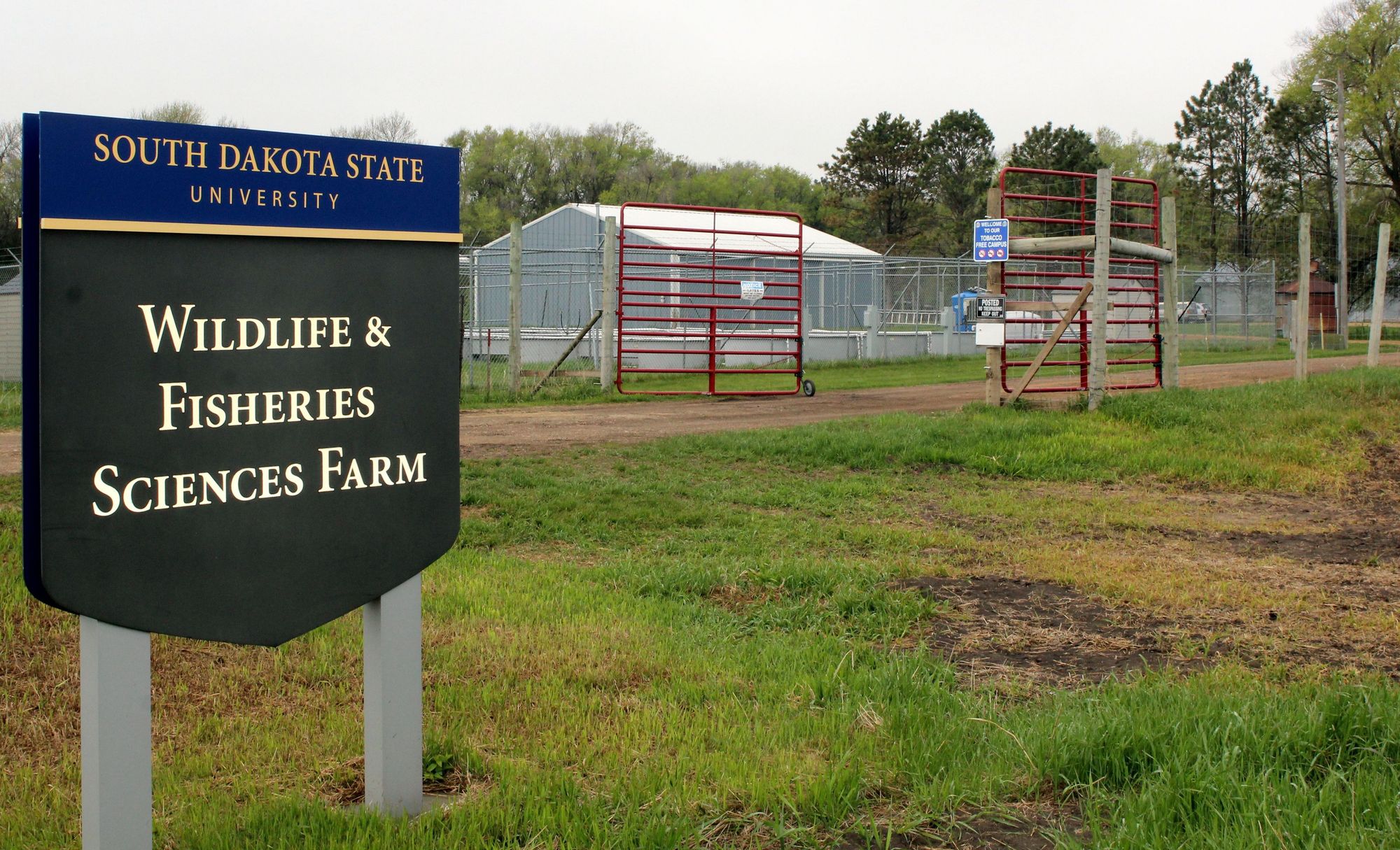
Wondering about a ‘new normal’
South Dakota State University President Barry Dunn said it was “surreal” to be on the Brookings campus in May and not have 11,500 students rushing to and from final exams.
Dunn said the university did a good job transitioning to online courses in the spring and in keeping people safe, resulting in not a single COVID-19 case so far. He also said the faculty and staff did well to reduce the impact of projected revenue shortfalls of $2.2 million in Fiscal Year 2020 and $3 million in Fiscal Year 2021 by holding jobs open, reducing travel and cutting discretionary spending.
Still, the university is likely to face new challenges amid the pandemic, which Dunn said could result in an enrollment drop of 300 to 500 students in fall 2020. “We’re doing everything we can to encourage them to come,” he said, including expanding scholarship opportunities.
SDSU took a significant hit in reimbursements paid out in the spring semester when it paid $6.7 million back to students for housing, meals and parking.
The CARES Act has helped SDSU and its students endure the pandemic. SDSU received $6.2 million, half of which went directly to students who qualified, and the rest to the university to offset reimbursements and other costs, Dunn said.
Dunn is concerned that research endeavors and the university’s extension efforts may suffer during the pandemic, especially in regard to research that requires lab work or in-person contact with subjects. SDSU has $68 million in research expenditures in Fiscal Year 2019, and spent $18.5 million on extension services.
“It’s been a victim of COVID-19,” he said of research in biology, food science and veterinary science, among other fields. “We’re encouraged to get our research engine up and going again, because that’s what provides the answers to complex questions like COVID-19.”
Dunn said he and other educators remain committed to the idea that in many cases there is no replacement for in-person teaching and learning.
“The loss of human contact — there’s a real price there,” he said. “For all the chatter about how good online education is, almost everyone will tell you that it’s impossible to train nurses, doctors, scientists, engineers or farmers and ranchers without face-to-face, experiential learning.”
Dunn said he is concerned about the potential for long-term implications of an “educational hangover” from the pandemic caused by the potential for a “gap year” among college students and the extended learning loss taking place in the K-12 system, in which young students are being taught remotely and some have been hard for teachers to reach at all.
“I’m predicting we’ll have a need for more remedial education at the college or the technical college level, and that’s a very expensive thing,” Dunn said. “I think that hangover will be with us for at least five years … maybe a decade.”
Dunn said remote learning amid the pandemic has posed challenges for some rural students who do not have good internet connections. He said he had heard of some students driving to the top of a nearby hill in order to download coursework documents.
Dunn also expressed concern about the potential that fall sports, including Division 1 football and other revenue-generating sports, could be damaged by the pandemic. Dunn said the decision on whether sports will be held or whether fans will be allowed to attend is mainly in the hands of the National Collegiate Athletics Association.
“It’s really up to the NCAA and we’re all very anxious to hear what will happen in the fall and whether fall sports will be held,” Dunn told the Regents. “That is not in our hands, but we’re very anxious about that.”
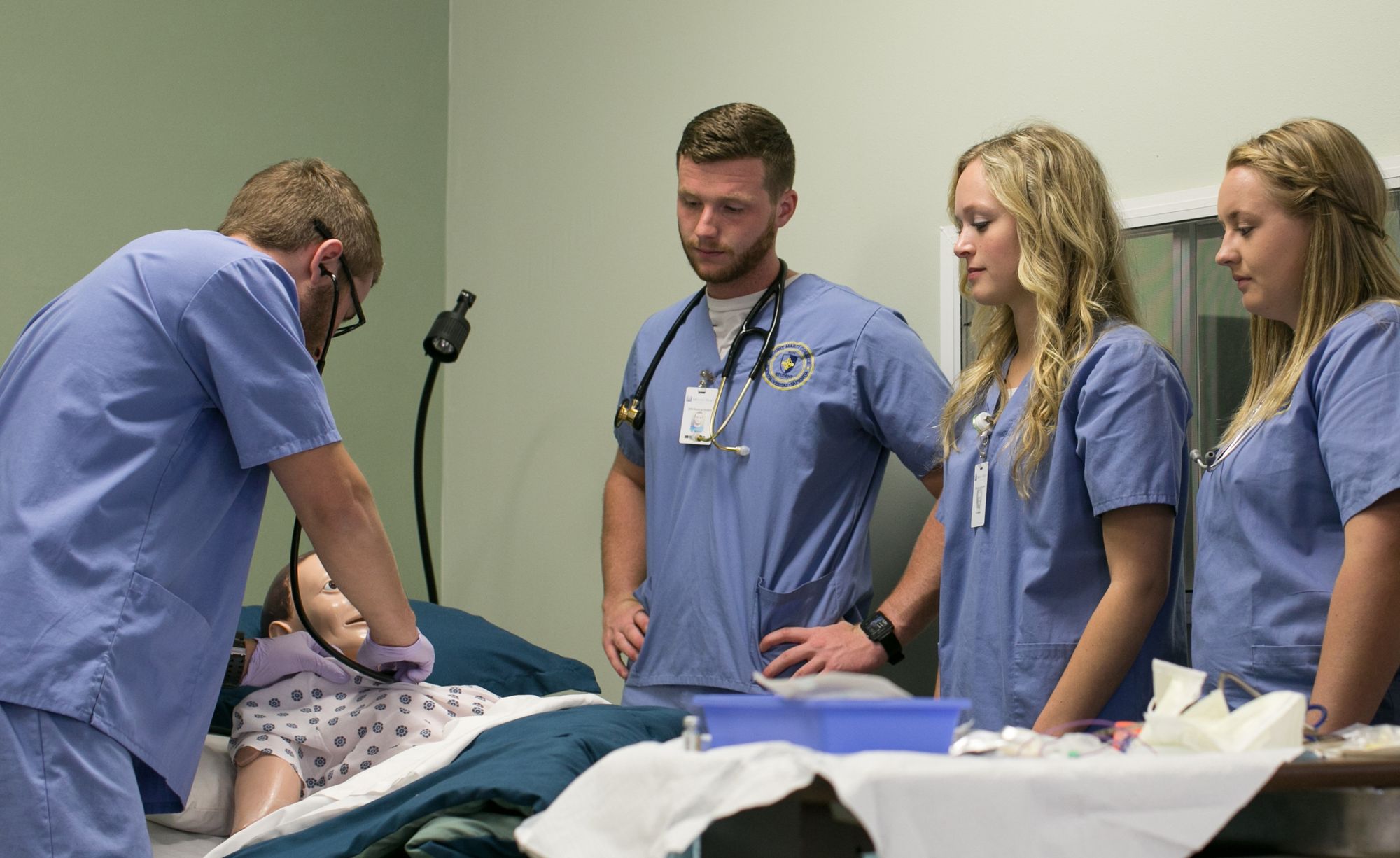
Private schools adjust in unique ways
Some national experts predicted that the COVID-19 pandemic would have an especially devastating impact on small, rural private colleges that did not have the financial foundation to survive enrollment and revenue declines.
But in South Dakota, Mount Marty College has no such concerns and is bucking the trend of falling enrollment amid the pandemic, said President Marcus Long.
“There’s a lot of time between the fall semester and now, but we’re actually projecting a significant enrollment increase,” Long said. “Our admissions are running 60% ahead of where we were last year.”
A slate of capital projects has made the main campus of the Benedictine liberal arts college in Yankton more attractive to students, as has the plan to add a football program in 2021, Long said. The college built a state-of-the-art nursing center, erected a new residence hall and is finishing up a $15 million field house, he said.
The college, with overall enrollment of about 800 at its three locations, including satellite campuses in Watertown and Sioux Falls, saw roughly 2% annual enrollment increases dating to 2016. Many of the new enrollees for this fall are student athletes, he said.
The college expects to host in-person classes and have students reside on campus in the fall, but will prioritize health and safety by offering a mix of face-to-face and online courses, Long said. The college has done well in attracting students from South Dakota, Nebraska and Iowa who seek an intimate college experience in a small-town setting that they see as mostly safe from COVID-19, Long said.
“There’s a huge amount of momentum here,” he said. “We were looking for a fantastic year before the pandemic came, and we’re still looking pretty strong now.”
Oglala Lakota College, a private school of about 1,200 mostly Native American students in Kyle, S.D., is expecting an enrollment decline of only about 5% due to the pandemic, which President Thomas Short Bull said will not create any long-range financial hardships for the school. Short Bull said the college has $48 million in endowments in reserve for its faculty and student scholarship programs.
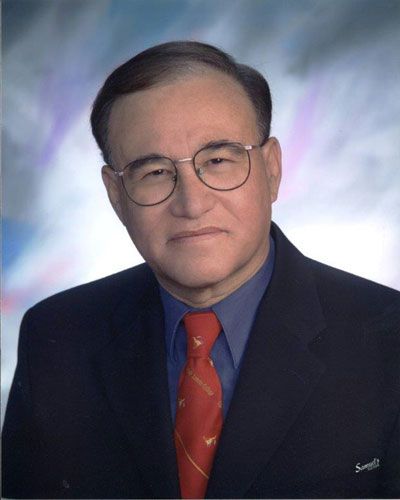
In some respects, the college and its students may see a long-range benefit from the pandemic once it passes, Short Bull said.
The CARES Act passed by Congress has been particularly helpful for OLC and its students, he said. The college received about $3 million in funding from the CARES Act, $1.3 million paid directly to students in need and the rest helping to fund college operations. Nearly 90% of the students qualified for federal assistance to attend college and for aid from the CARES Act, Short Bull said.
Part of the money was used to pay for meal programs for students during the pandemic, but some was used to prepare students for remote learning in the fall semester, Short Bull said. The college purchased 600 laptops and 300 cell phones to lend to students who needed to become connected to online learning, he said.
Despite challenges that students in the remote region of southwestern South Dakota may face with distance learning and obtaining internet connections, Short Bull said the college would not bring back students for face-to-face learning in the fall.
“It’s too risky to bring students back to campus,” he said. “I think that’s a big mistake to bring students back.”

